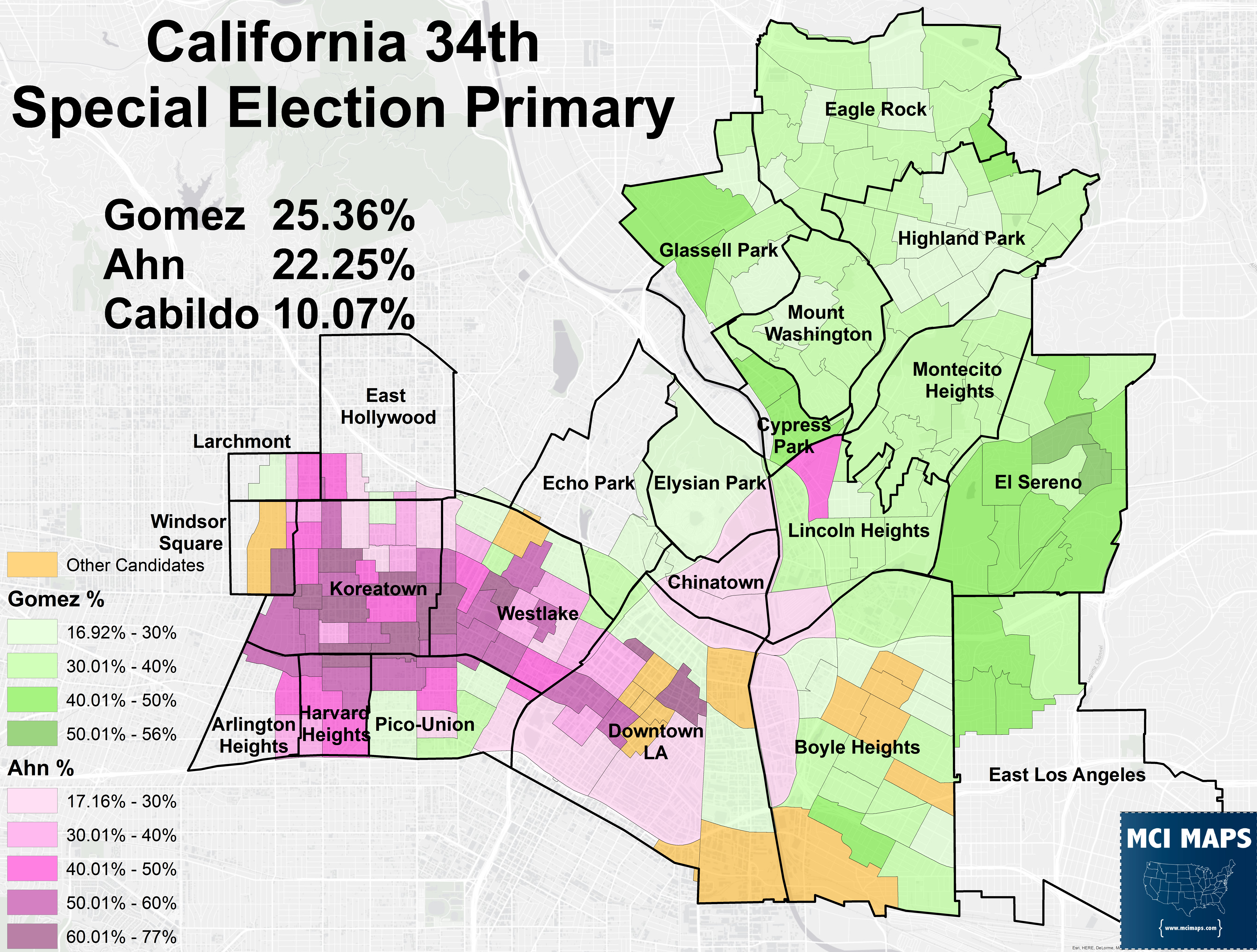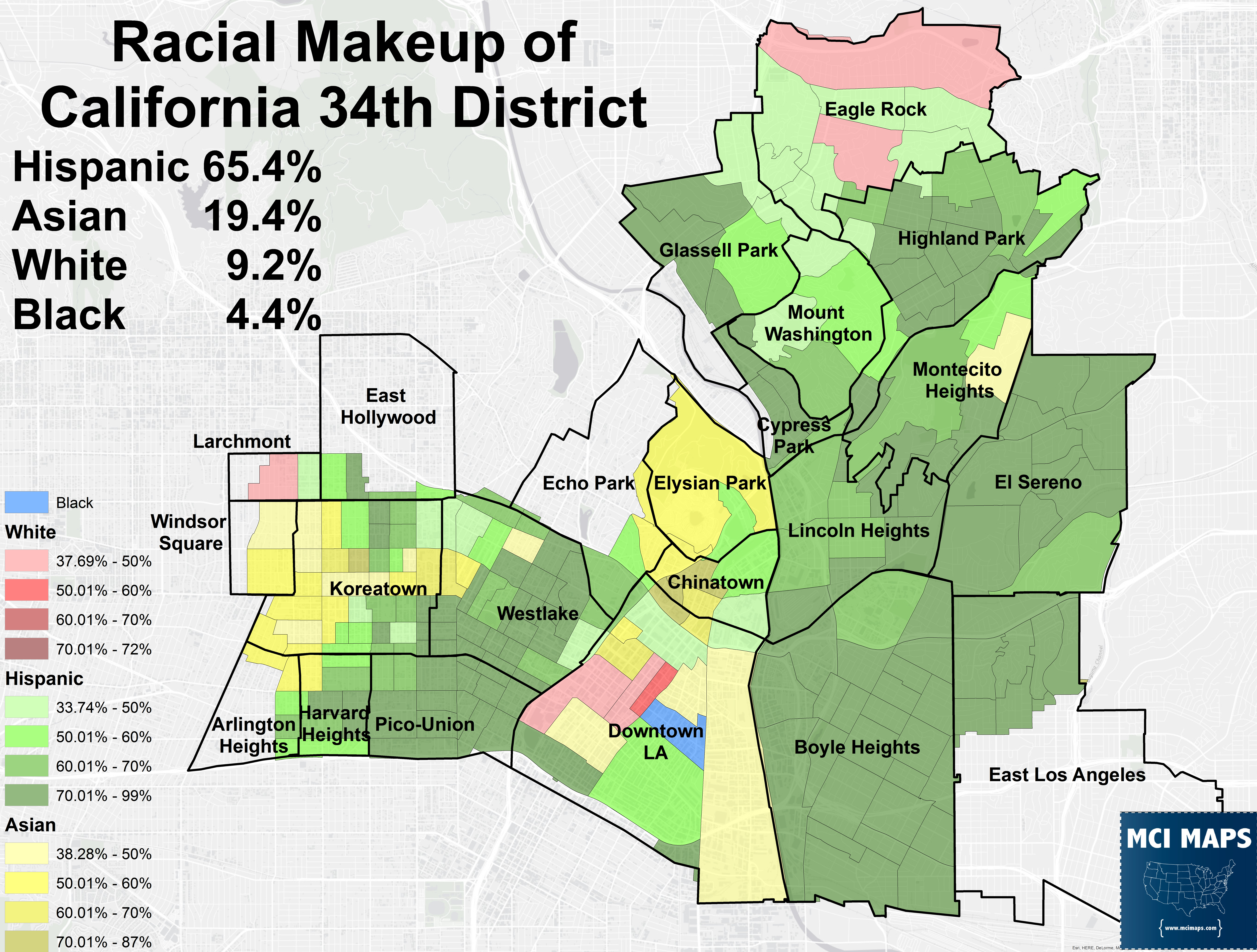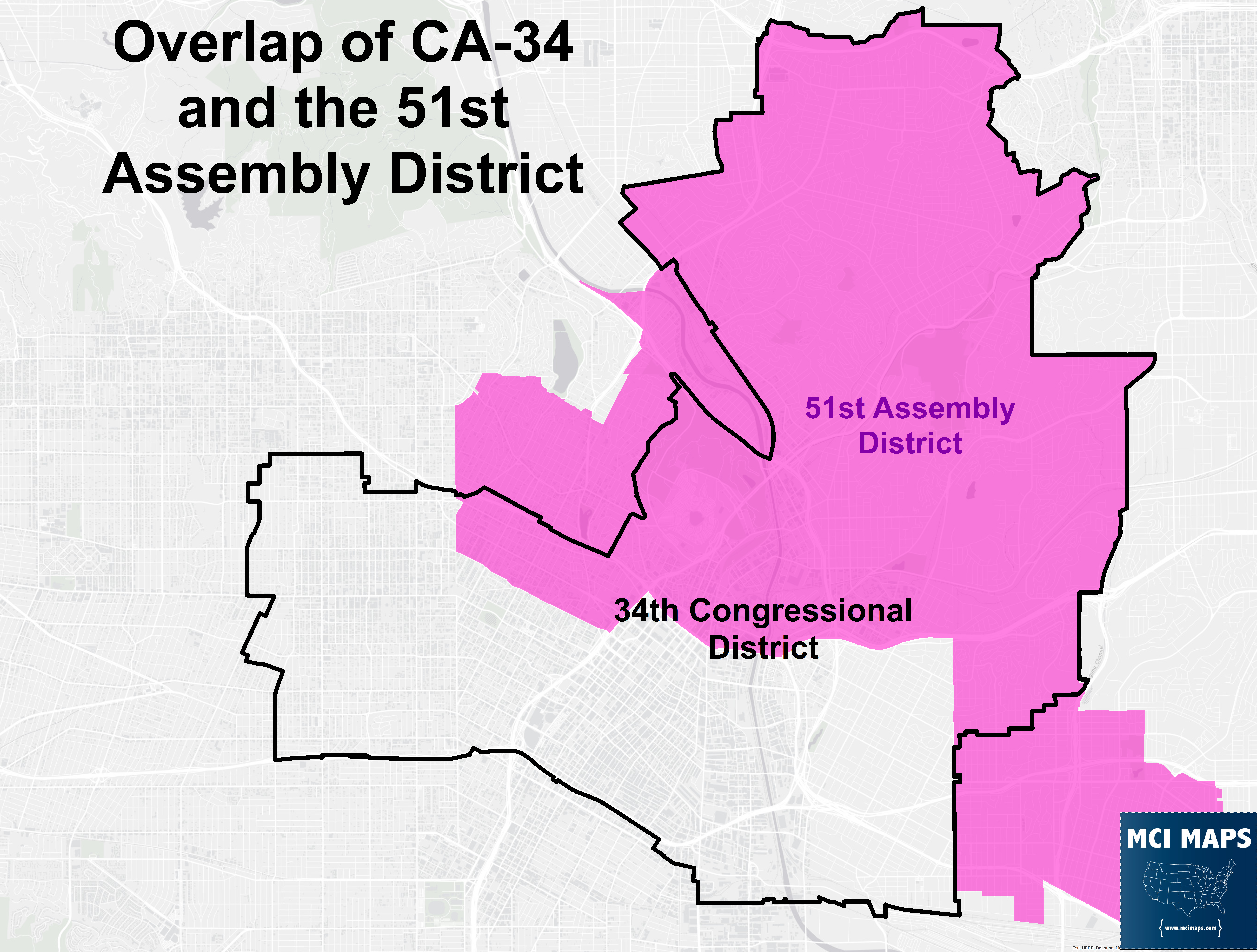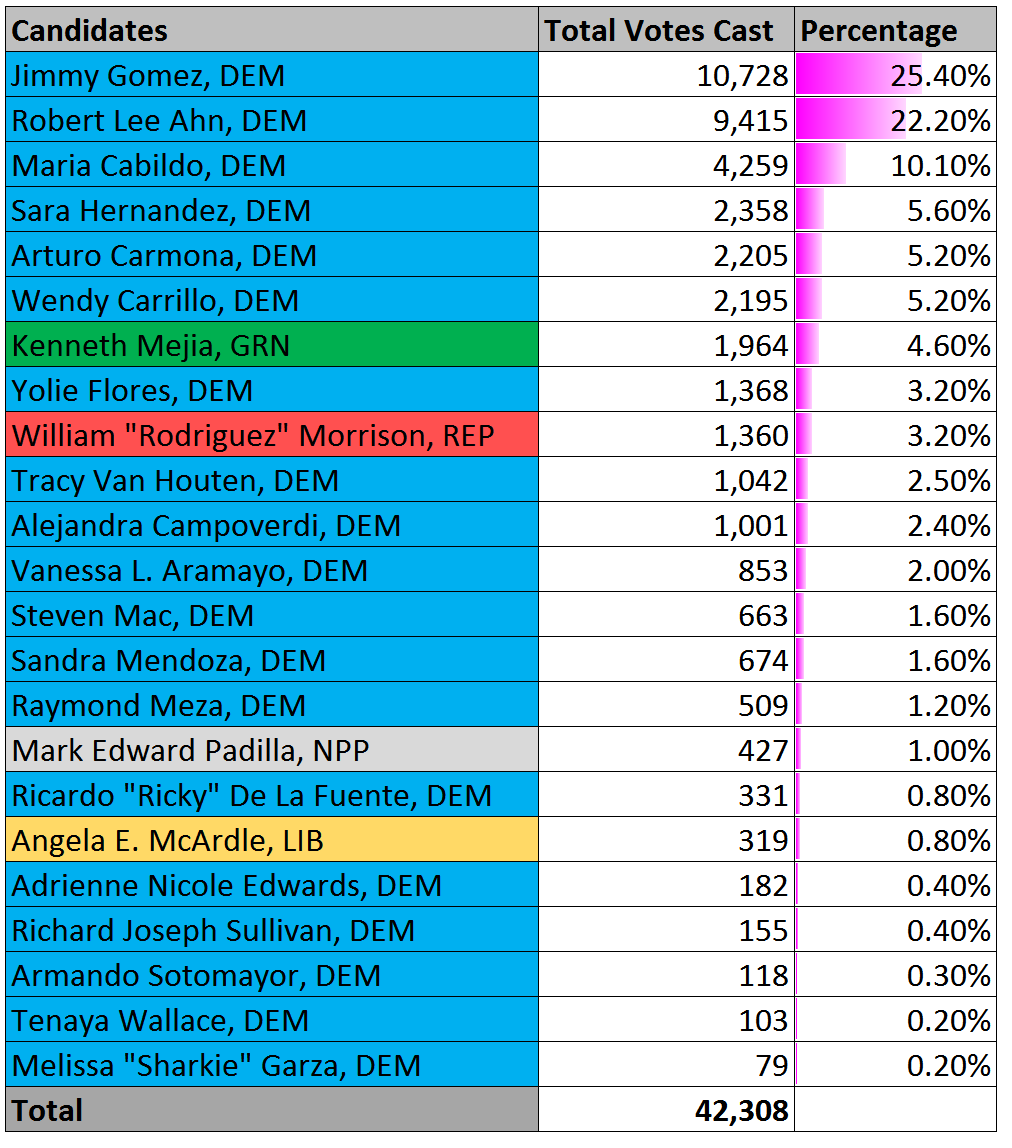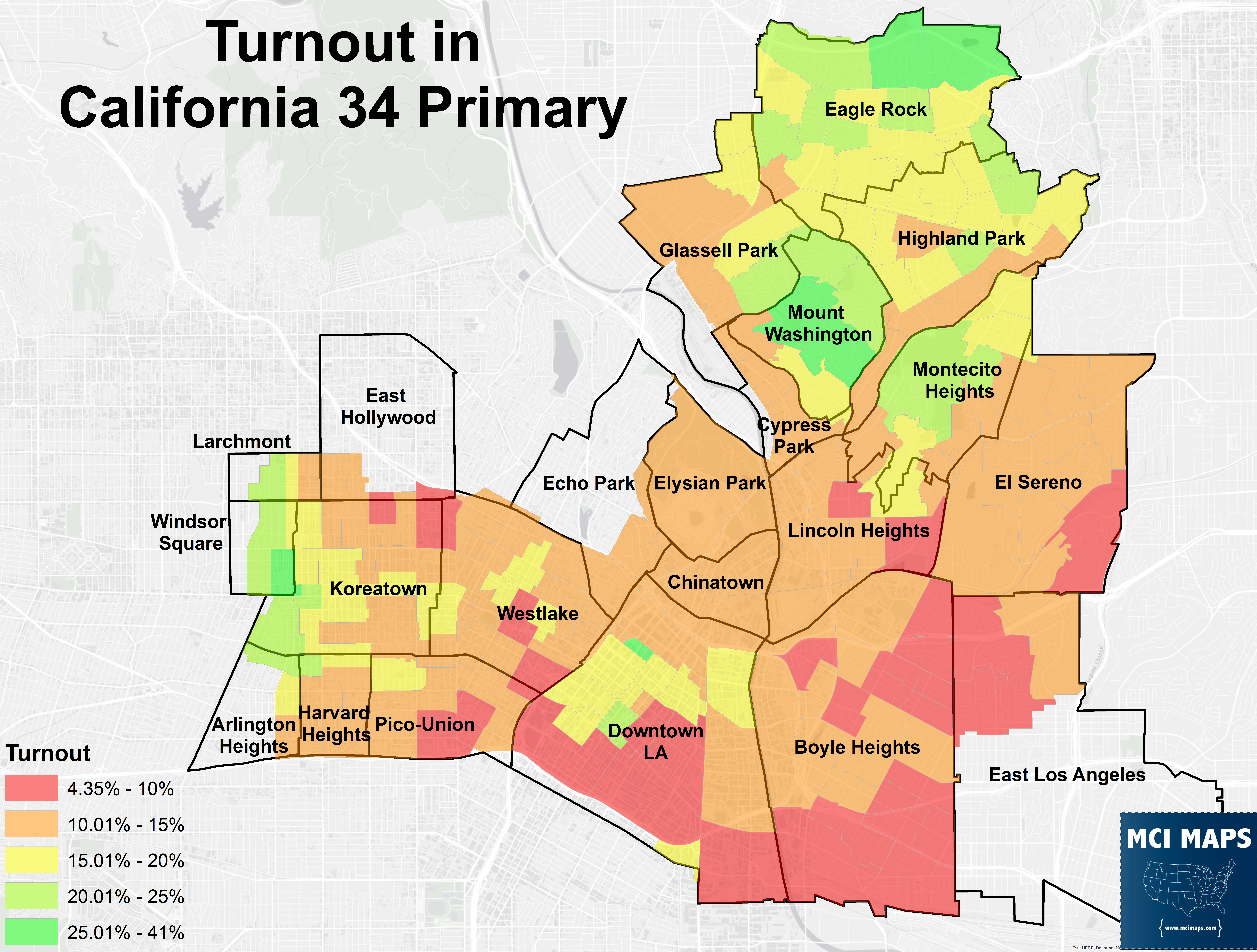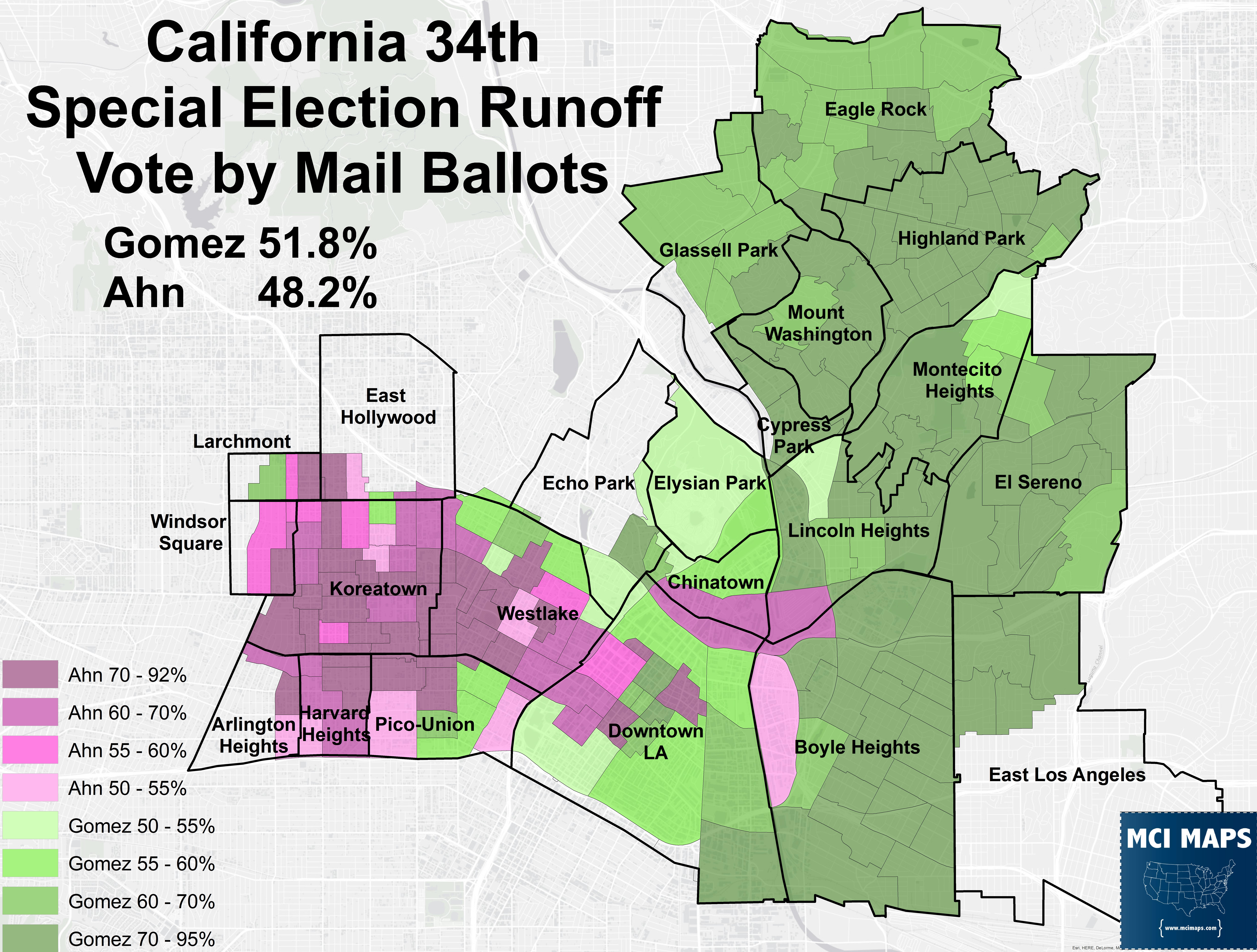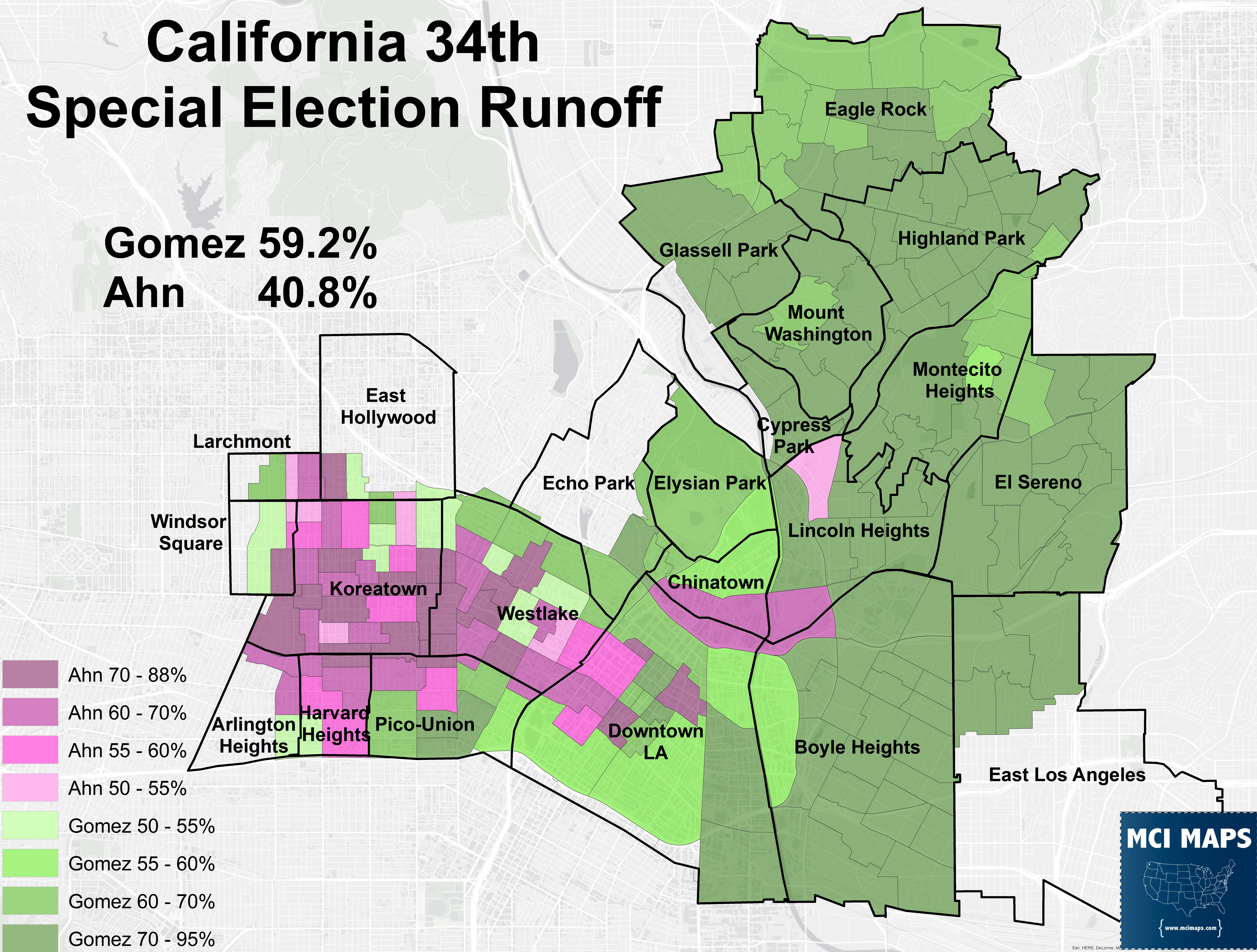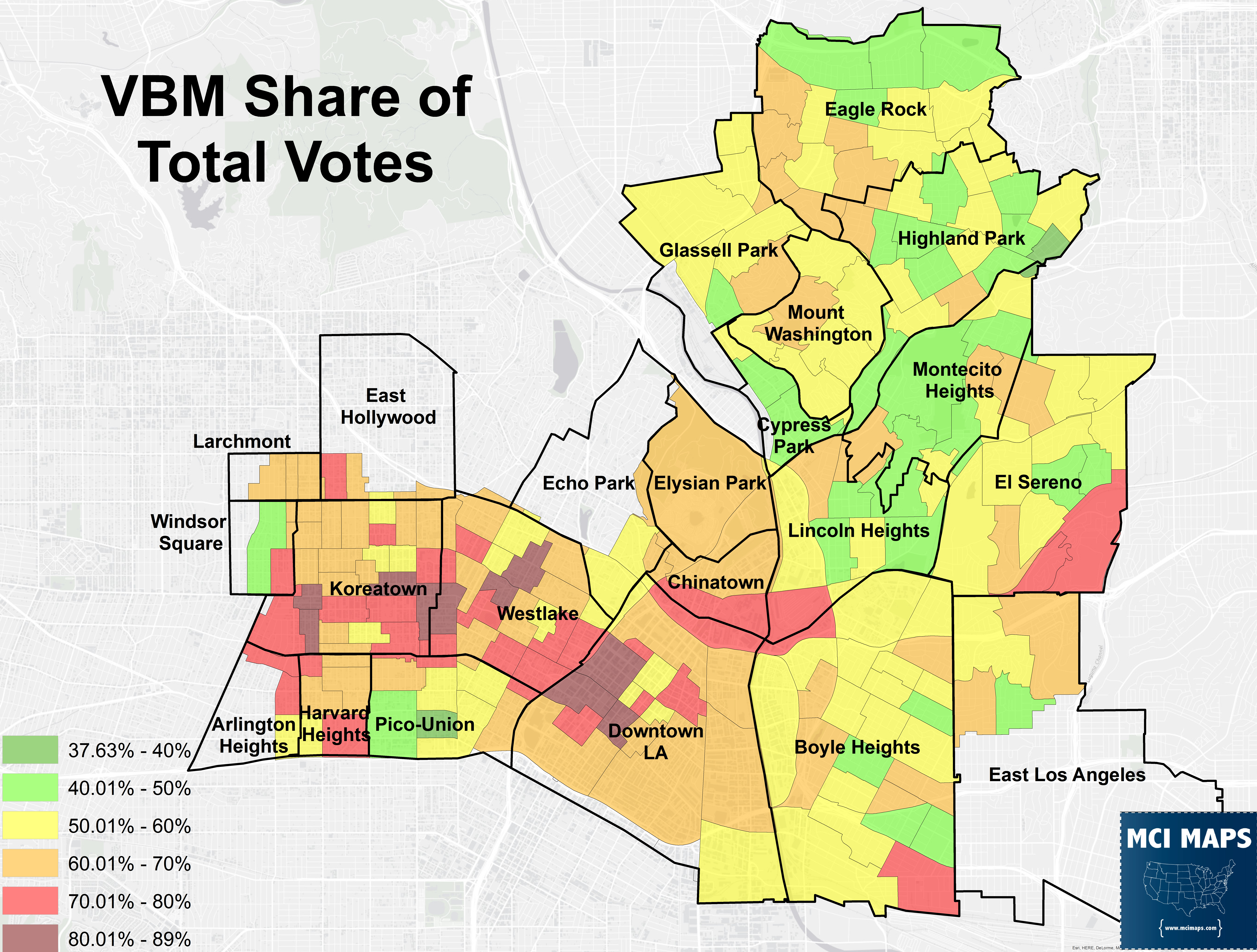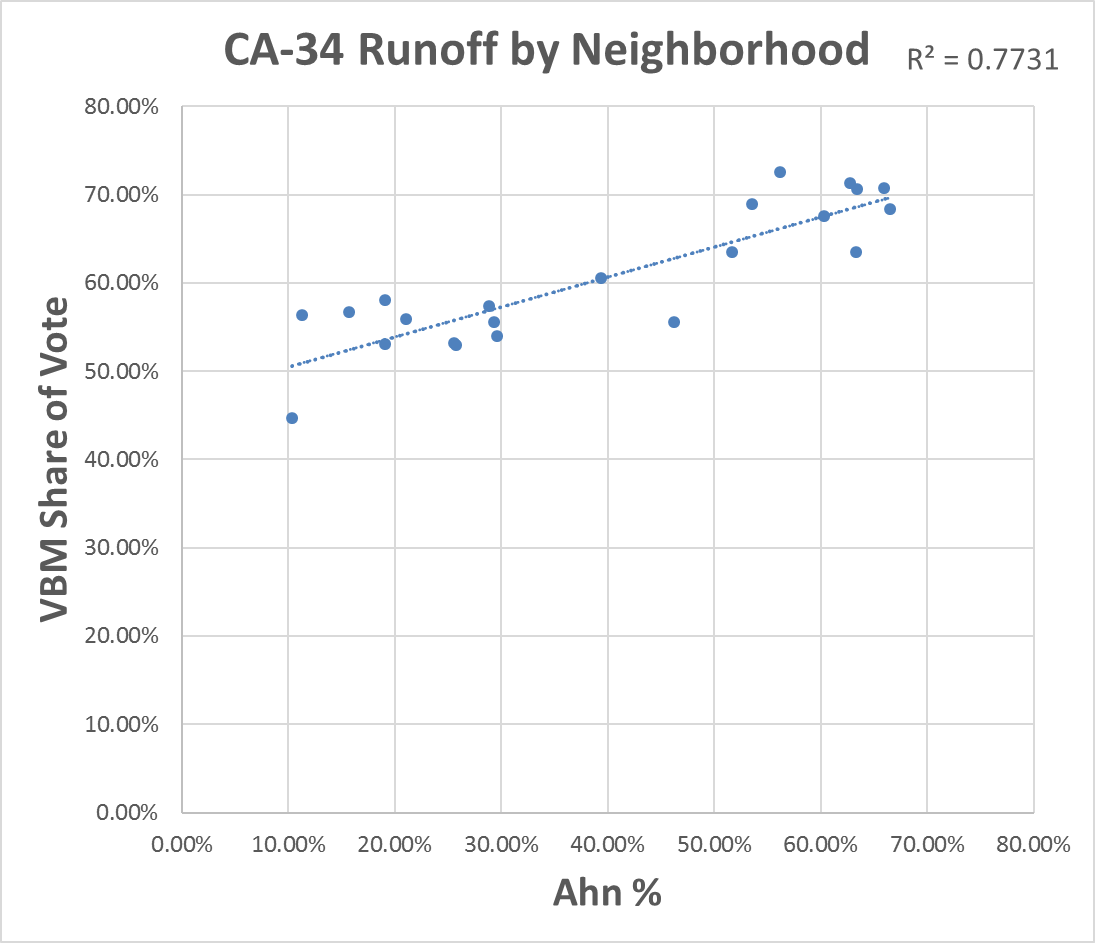June 6th will feature the special election runoff for the California 34th district. The seat, deep in the heart of Los Angeles, was vacated when Congressman Xavier Becerra was appointed California Attorney General. This forced a special election in a seat that gave Hillary Clinton over 80% of the vote in 2016, ensuring all focus would be on the Democratic side. As a series of other special elections were triggered, CA-34 fell off the radar. Surprisingly competitive Democrats in KS-04 and MT-AL; as well as a very competitive GA-06 special relegated CA-34 to afterthought.
The district is over 60% Hispanic, with Asian voters coming in second with 20%. This district is one of the least white and least Democratic in the nation.
The early focus of the special election was the split in the Democratic Party between establishment Democrats and the Bernie Sanders wing of the party. Of course the establishment of the California Democratic Party is still very liberal, making the split much more about style than policy. Sanders actually won the 34th district with 51%, one of his best showings with Hispanic voters during the primary season. Sanders’ win and the passion of his backers meant the Sanders wing had a real shot at getting a win in the primary. The big problem for them was uniting around a single candidate. Sanders stayed out of the race and the Our Revolution PAC did not endorse during the primary either. The two biggest Sanders-aligned candidates were Arturo Carmona, the Deputy Political Director for the California primary, and Wendy Carrillo, a former radio host/activist who endorsements from prominent Sanders backers. The split between the Sanders candidates got heated and Carmona was hurt by claims of sexism during his time on the Sanders campaign. Heading into the the primary, the Sanders forces were not united around one candidate.
The Democratic establishment, however, was united around Assemblyman Jimmy Gomez. Gomez’s assembly district has heavy overlap with the 34th Congressional district.
Gomez racked up the endorsements of prominent Democratic politicians and the official endorsement of the California Democratic Party. His strong backing was decried as a coronation by his opponents. Gomez was a solid liberal in the state assembly and drew plenty of liberal endorsements as well.
In addition to the focus on the Sanders vs Establishment fight, two other dynamics were being watched heading onto the primary. California uses jungle primaries to decide its elections – everyone of all parties runs on the same ballot, top two go to a runoff. 19 Democrats filed to 1 Republican. There was intrigue about the Republican candidate, William Morrison, sliding into the runoff thanks to a split field (which would make the runoff safe Dem of course).
The other thing to watch was the candidacy of Robert Lee Ahn. Ahn was a former city planning commissioner and a former Republican that switched to the Democrats a few years ago. Ahn was Korean-American and focused much of his campaign on getting Asian voters to the polls. Asian voters have much higher turnout than Hispanics do in special elections, making Ahn a contender for the runoff. Paul Mitchell’s analysis of the absentee returns in the primary showed Asian voters making up 35% of the returns but only 16% of registration; while Hispanics were only 28% of returns despite being 49% of registration (and 42% of those who had ballots delivered). The Asian voter surge was fueled by Koreans, who were only 6% of registration but 25% of returned ballots.
When the results came in for the primary, Gomez and Ahn were both solidly in 1st and 2nd. The two prominent Sanders backers were further behind and combined would not have made it into a runoff.
Ahn secured his 2nd place status by wracking up solid wins in Koreatown and the western end of the district where the Asian vote was prominent. Gomez won more of the district but with much more modest margins.
In the short time I opted to write this article I have not been able to track down election-day or final racial turnout. However, turnout was clearly low in the most heavily Hispanic regions of the district. The strongest turnout was in the western end, where Asian voters dominate, and the northern neighborhoods, which are Hispanic but also feature modest white and Asian populations. Ahn’s strong showings in areas like Harvard Heights and Westlake, where Hispanics dominated but Ahn won also point to low Hispanic turnout.
Runoff Dynamics
Ahn’s focus on Asian voters secured himself a spot in the runoff. However, his path to victory against Gomez is much rougher. Ahn will need several things to go right for him in the runoff.
- He will need to galvanize Asian voters even more so than in the primary
- Count on Hispanic dropoff in the runoff, or make inroads with Hispanics
- Win white voters, which make up around 1/3 of the vote due to their turnout
Ahn’s primary 2nd place was impressive. However, when you look at his showing versus the Hispanic Democrats in the race, he got crushed.
If the backers Gomez’s fellow Hispanic opponents go for him, Ahn will be crushed. Ahn is no doubt counting on many backers of opponents in the primary staying home and his Korean base surging to the polls. Ahn is claiming he’s reaching out to Hispanics, and white voters will be a key block as well. Gomez, however, has secured backing of his liberal opponents and the Our Revolution PAC, and his backing for single-payer healthcare in California has made it less likely liberals may sit out the runoff. Ahn has tried to take on the label of the outsider, but his time as a former Republican has not helped him, with liberal blogs attacking him and Democracy for America trashing him. Ahn is counting on an Asian Surge, and so far Korean voters are outpacing Hispanics in returned ballots for the runoff. However, white voters continue to make up around 1/3 of returns, making them a pivotal group. Ahn’s focus on the Korean voters has definitely paid off in fundraising. Over $300,000 have come into Ahn’s campaign account from the Korean American community. Ahn’s self-funding of half a million dollars have kept him on par with Gomez in fundraising.
Heading into the runoff, Gomez is the favorite. The establishment and liberal wing have all coalesced around the assemblyman and Ahn has been regarded with skepticism by the left wing flank. However, the turnout dynamics make the race worth watching. Ahn will need a surge of Korean (and overall Asian) voters on election day as well as winning white voters. The likely low turnout makes the ability to shift the dynamics of the race much easier.
Runoff Results
When the first batch of results came in on election night, made up of vote-by-mail ballots, the race was very close, with Gomez in a narrow lead.
However, this group, as documented earlier, was much for favorable to Ahn due to the high ballot-return rate among Asian Americans. The polling location vote, however, was a massive win for Gomez.
The final results were just under 60% for Gomez.
Ahn’s close showing in the absentees was thanks to the high Asian-American return rate. However, on election day, the vote was much more Hipsanic and came from areas outside the western neighborhoods than Ahn was stronger in. The map below shows the VBM share of the total vote by precinct for the runoff.
Breaking down the primary and runoff by neighborhood, Ahn won neighborhoods in the west but was absolutely decimated in prominent Hispanic neighborhoods.
Ahn’s strongest neighborhoods were also the areas with the largest share of their vote being VBM.
Low turnout specials can lead to upset wins. However, in the case of CA-34, Gomez, the favorite from the beginning, pulled out a comfortable victory at the end. Ahn’s close showing in VBMs showed the power of turnout, however the failure to ensure a large lead on VBM or get solid turnout in the west on election day ensured Gomez’s victory.

